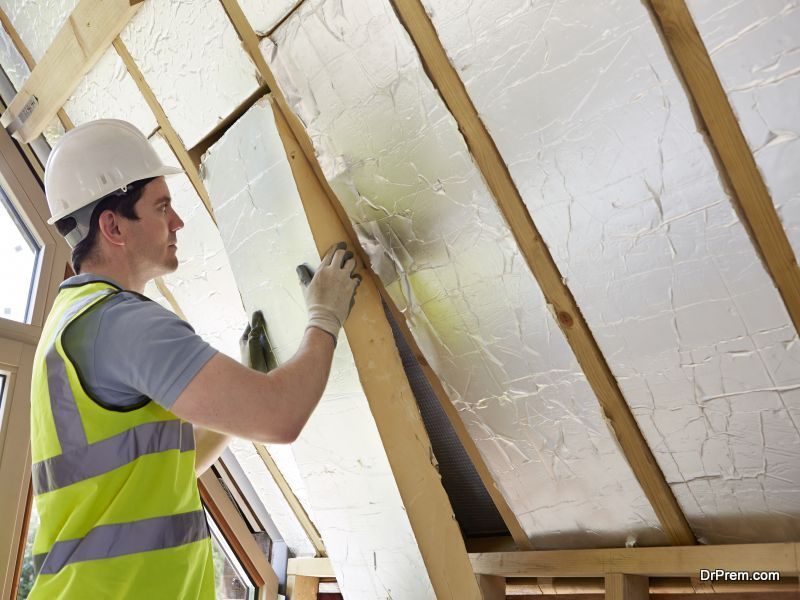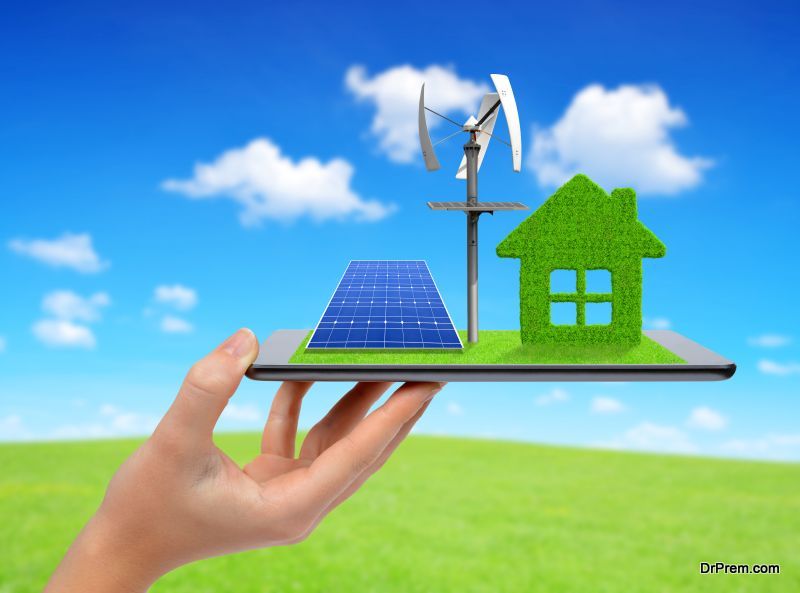Till now we have seen and talked about carbon zero buildings. Carbon positive houses/buildings go one step further. This is done by producing enough energy on site (‘net export’ or ‘positive’ additions). This means a carbon positive house produces enough energy for itself and has more left over, which is fed to the grid. These houses also have a much reduced carbon footprint, and are thus a positive addition to the planet, unlike the buildings which guzzle a huge amount of energy and produce a lot of emissions and waste. Let’s take a look at all the elements which are required to design a carbon positive house, so that you may plan to build a carbon positive home in the future:
How to design a carbon positive house
 Before being carbon positive, you have to make your home carbon neutral. Some of the ways you can do that is by purchasing carbon offsets, improve the energy efficiency of your home and appliances, use green or renewable energy, adopt behaviors which reduce the CO2 emissions of your home.
Before being carbon positive, you have to make your home carbon neutral. Some of the ways you can do that is by purchasing carbon offsets, improve the energy efficiency of your home and appliances, use green or renewable energy, adopt behaviors which reduce the CO2 emissions of your home.
To design a carbon positive house, or a home which has less than zero carbon emissions, you have to incorporate/consider the following things:
- Find out the specified standards of energy efficiency as well as on-site energy generation, so that you can achieve your energy goals
- Building thermal envelope, built-in cooking appliances, fixed lighting, shared infrastructure, renewable energy generator
Install a heat pump
When you live in a cold climate and are designing a carbon positive building, then you should definitely consider installing heat pumps. These pumps use around 1000W energy but give 3000W power as heat.
Installing solar panels/photovoltaic (PV) cells
 For a home to be carbon zero or less than that, it has be one which produces its own energy. This can be done by installing enough rooftop solar arrays or photovoltaic system, but it is very expensive and many homeowners cannot afford to have a huge PV system. In order to design a carbon positive house, you have to think of ways of designing in which you can reduce energy use and increasing your home’s energy efficiency.
For a home to be carbon zero or less than that, it has be one which produces its own energy. This can be done by installing enough rooftop solar arrays or photovoltaic system, but it is very expensive and many homeowners cannot afford to have a huge PV system. In order to design a carbon positive house, you have to think of ways of designing in which you can reduce energy use and increasing your home’s energy efficiency.
Design considerations
So how is it possible to design a carbon positive house? In this design, every aspect of the home, including the location and direction of your home has to be utilized fully.
Choosing the site
 Choose a site which offers many advantages, including the generation of renewable energy as passive solar heating/cooling, food production and reduces transport costs. The perfect site for a carbon positive home is one which has nice breezes bowing at all times. The designers have to plan to use the wind energy as well as the variations of temperature, so that you don’t have to depend on any kind of energy, grid or off-grid and your home stays warm or cold naturally.
Choose a site which offers many advantages, including the generation of renewable energy as passive solar heating/cooling, food production and reduces transport costs. The perfect site for a carbon positive home is one which has nice breezes bowing at all times. The designers have to plan to use the wind energy as well as the variations of temperature, so that you don’t have to depend on any kind of energy, grid or off-grid and your home stays warm or cold naturally.
Building materials
Whatever building material you choose to use, do find out about their production methods. If there are a lot of emissions during production, then you have to forego those materials. There are many green options in the market, which are quite durable too. These might be a little expensive but will be a good investment in the long run.
Choosing the right materials for insulation
 The most important aspect while designing is to choose materials which would increase energy efficiency, and this kind of design is known as the ‘passive design strategy’. For example the materials you use for insulating your home can be natural.
The most important aspect while designing is to choose materials which would increase energy efficiency, and this kind of design is known as the ‘passive design strategy’. For example the materials you use for insulating your home can be natural.
In order to make your home carbon neutral, all the energy has to be used, reused and conserved. The right insulation used in the walls enable less heat to pass through. So when it’s cold outside, it’s warm inside and vice versa. There are some insulation materials which are so effective that even if it’s freezing outside, your family’s body heat and the heat from electrical devices would be enough to warm your home. Sounds good, doesn’t it? Imagine the energy and monetary savings you would have!
Hemp insulation is one such material which is expensive but efficient and removes CO2 from the environment during production. Not using Polystyrol and Rock Wool thermal insulation is a choice you have to make, as the production of this materials uses up as much energy as would be required to heat the home for many years.
So is it possible to design a carbon positive house? Sure! If it is permitted by your local laws, you can use straw as insulation which is both affordable and easily available.
Building thicker walls are a good option too.
Generate your own power
To be carbon positive, your home has to generate its own power/electricity, or else you have to be extremely energy efficient. Depending on where you live, you can install wind turbines, solar panels and collectors and use the water sources to generate your electricity. You first have to decide whether you want to be connected to the grid or not. After you make the choice, your eco friendly designers will advise you on the best route for renewable/sustainable energy generation for your home.
Windows
 Windows can be turned into an energy saving asset of your home. Using double or triple layer glass windows is affordable now, and if you buy them without the frames, even more so. Using wood in your price range to make the window frames will bring down the cost of energy efficient windows.
Windows can be turned into an energy saving asset of your home. Using double or triple layer glass windows is affordable now, and if you buy them without the frames, even more so. Using wood in your price range to make the window frames will bring down the cost of energy efficient windows.
Solar collectors
In the design a carbon positive house, solar collectors (not to be confused with PV cells) can play an integral part to keep energy bills down. These are simple devices – just some black tubes which have water passing through them, kept on the home’s roof. The water is heated by the sunlight and is sent to an insulated tank, heating up the rest of the water there as well. This water can be used for showers and other household uses, including heating the house.
Use vapor retarders and barriers to improve the insulation of your home.
A small home, which produces its own energy is easier to make carbon neutral. Conserving and reducing fossil fuel and natural resources will help you keep your living cost down and help to live in a home which is least harmful to the environment.



